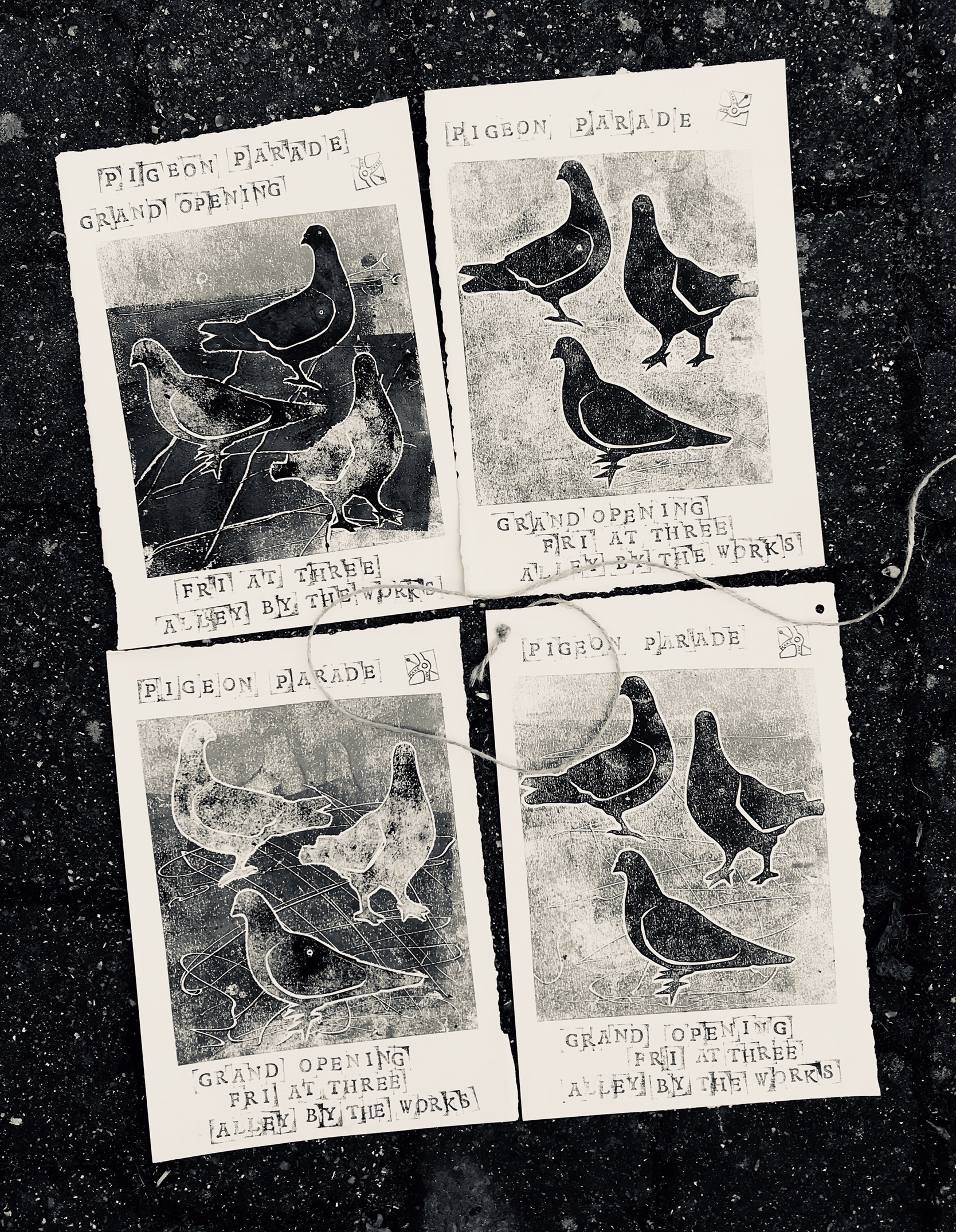Working with Mark Wharton from Iotic Labs, Elizabeth Cooke and Deborah Pipe

Part of R&D ‘Reframing Bury St Edmunds’ project exploring arts and technology for Collusion.
An art and tech encounter about data culture; way-finding; difficult public spaces; pigeons, surveillance and the process of cross-disciplinary collaborative practice. The encounter took place in an unloved space in Bury St Edmunds over one weekend in April.





The difficult space is no more than a crack in the built environment; a route for the more subversive and intrepid foot traveller; the threshold between old and new; of uncertain ownership; only visible to a few; unwatched; unnoticed; ignored; a night-time urinal; a negative space; a place to sleep; unnamed; temporary; a playable place; a possibility; an opportunity.




What’ll happen if we divert people into this space and create an encounter with unknown outcomes; can this be an unmediated experience; what is the visual language of the space; what’s the local knowledge; can we reveal layers like an archaeological excavation; can a data base generate emergent art in this space; do we make the invisible process of data collection visible; what do we choose to reveal; how can the experience change depending on who has been detected in the space.








This is Mark’s account of the tech used;
The technology that would deliver our enchanted space was a mixture of hardware and software: 5 Raspberry Pis and a computer/projector, all with 3G dongles to allow them to run independently and autonomously over the cloud hosted Iotic Space. The first Pi used Bluetooth MAC address sniffing to detect phones in and around the alley; the second had a proximity to detect movement in the alley itself. These 2 inputs were sent to an algorithm in the cloud that hashed them all together and controlled 5 other devices around the alley. The interactions between sources of data and consumers of data and controls, and the algorithms determining our logic and intent, were brokered within the Iotic Space.
Colours: using the last 3 bytes of the MAC address as an HTML colour code to drive LED displays and using the same technique with the output from the algorithm.
Sounds: 3 Raspberry Pis with speakers, playing a selection of audio clips based on the output from the algorithm, sounds of pigeons, spoken word, musical clips
Video: using a similar technique to the audio, but showing pigeon related video clips
Lighting effects:using UV torches to illuminate pigeons made out of fluorescent Perspex
Animatronic pigeons: using hacked robot toys to drive decoy pigeons (turning heads, flapping wings)


